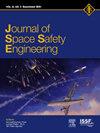做好初步危害分析
IF 1.7
Q3 ENGINEERING, AEROSPACE
引用次数: 0
摘要
初步危害分析(PHA)广泛用于所谓的基于风险的空间系统设计,以识别和减轻危害。分析相当简单,但是需要对关键原则有清晰的理解。本文讨论了在PHA执行过程中应避免的一些可能影响整体工作的关键错误。本文章由计算机程序翻译,如有差异,请以英文原文为准。
Getting the preliminary hazard analysis right
The Preliminary Hazard Analysis (PHA) is widely used in the so-called risk-based design of space systems to identify and mitigate hazards. The analysis is rather straightforward, however it requires a clear understanding of key principles. This paper discusses some critical mistakes to be avoided during the performance of the PHA that can compromise the overall effort.
求助全文
通过发布文献求助,成功后即可免费获取论文全文。
去求助
来源期刊

Journal of Space Safety Engineering
Engineering-Safety, Risk, Reliability and Quality
CiteScore
2.50
自引率
0.00%
发文量
80
 求助内容:
求助内容: 应助结果提醒方式:
应助结果提醒方式:


